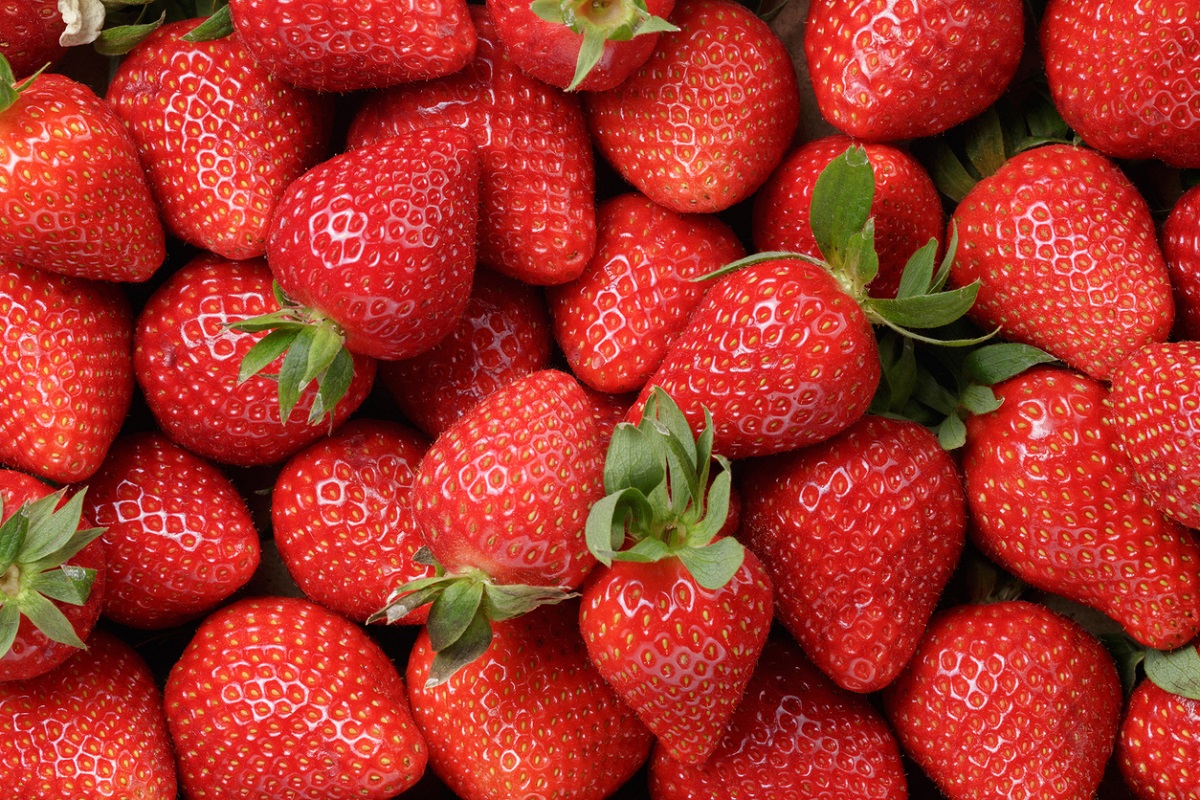
Protein Responsible for Strawberry’s Signature Red Color Identified
May 10, 2023| |
Scientists from the University of Cordoba in Spain identified transcription factor protein FaMYB123 as a key component in controlling the production of strawberry's red color. It interacts with another factor protein, FabHLH3, which contributes to the increased production of anthocyanins during the fruit's ripening stage.
The scientists have long been studying the genetic regulation of strawberry ripening. This led them to the identification of FaMYB123, and further investigation led them to creating a transgenic strawberry plant that repressed its expression. They found that without FaMYB123, the strawberry did not exhibit the color red. These results provide researchers and breeders with new knowledge about controlling the ripening of strawberries, which can be used as a tool in genetic research and plant breeding programs.
The strawberry's red color is a trait that is sought after by consumers, along with aroma, flavor, and texture. It also attracts insects that disperse seeds which favors subsequent growth of future plants. These are what makes the redness of strawberries more valuable to humans and the environment.
Read the full study in The Plant Journal and the report by Mirage News to know more.
| |
You might also like:
- Researchers Map Strawberry Genome
- FaTM6 Controls Flower Development in Strawberry
- The Role of Annexin Genes in Strawberry Fruit Development
Biotech Updates is a weekly newsletter of ISAAA, a not-for-profit organization. It is distributed for free to over 22,000 subscribers worldwide to inform them about the key developments in biosciences, especially in biotechnology. Your support will help us in our mission to feed the world with knowledge. You can help by donating as little as $10.
-
See more articles:
-
Plant
- Protein Responsible for Strawberry’s Signature Red Color Identified
- Gene Editing Provides Promise to Grain and Oilseed Supply Chain
- Scientists Discover Puzzling Nature of RNA Editing in Plants
- Experts Promote Genome Editing Regulations that Consider Societal Benefits
- Bacterium Transfers Own Genes into Plants to Give Them Superpowers
- Genomic Surveillance Identifies Emerging Wheat Disease Fungus
-
Animal
- Filipino Scientists Develop Easy, Affordable and Efficient Method of Fish Spawning
-
Food
- First Plant-based Meat Substitute Facility in Abu Dhabi Launched
- Over a Quarter of a Billion Faced Severe Hunger in 2022 - Report
-
Read the latest: - Biotech Updates (December 17, 2025)
- Gene Editing Supplement (December 17, 2025)
- Gene Drive Supplement (February 22, 2023)
-
Subscribe to BU: - Share
- Tweet

